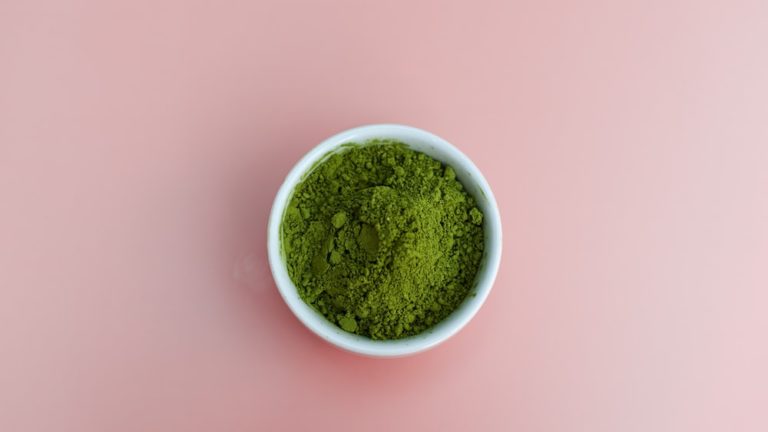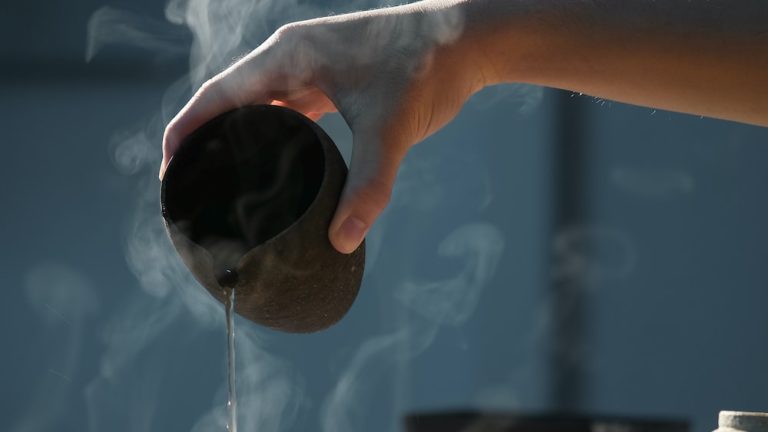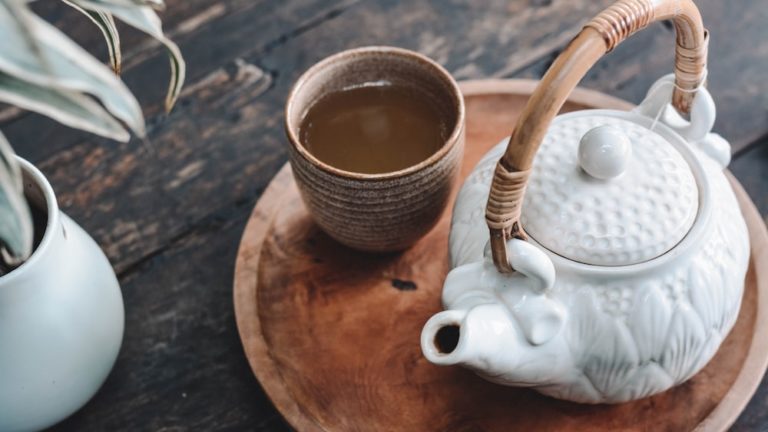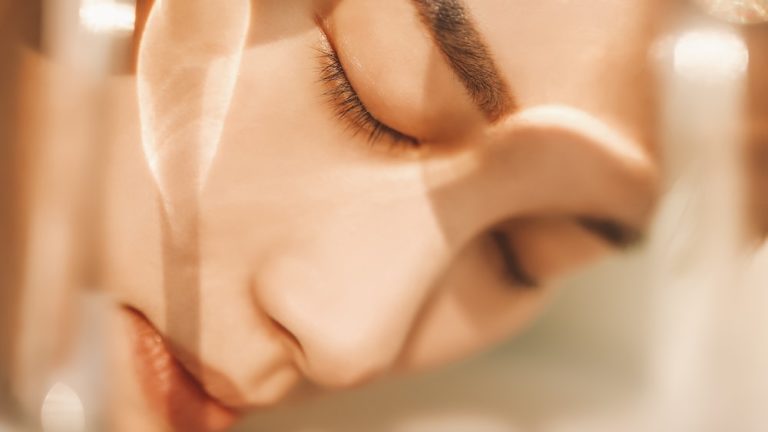Yellow Tea Vs Green Tea: The Ultimate Comparison

Yellow Tea Vs Green Tea: The Ultimate Comparison
Tea lovers, gather around, because it’s time for a tale of two teas! Have you ever found yourself standing in front of an endless array of tea types, scratching your head in the Great Wall of Tea confusion? Well, we’re zooming in on the intricate dance-off between two sublime brews: yellow tea vs green tea.
Key Points:
- Yellow tea undergoes a unique, gentle oxidation process known as ‘sealing yellow’, giving it a distinctive mellow flavor.
- Green tea is quickly heated soon after picking to halt oxidation, retaining its crisp, grassy flavors and high antioxidant content.
- Yellow tea was once revered as a drink fit for emperors in ancient Chinese culture.
- Green tea is a symbol of health and mindfulness, deeply embedded in various cultures and traditions.
- Yellow tea has a milder caffeine content, making it a gentler option for those sensitive to caffeine.
- Both yellow tea and green tea are rich in antioxidants, offering potential health benefits such as promoting good digestion and heart health.
- Yellow tea is rarer and harder to find compared to the more widely available green tea.
It’s like the conundrum of picking your favorite child, isn’t it? On one hand, green tea has been the go-to wellness infusion flaunting its greenery at every health food aisle, while on the other, yellow tea remains the mysterious underdog, a hidden gem among tea types that whispers tales of exclusivity. We’re here to detangle this sip-worthy yarn, decoding each tea’s essence, right down to the microcosm of their leaves.
And for you, the savvy sippers who relish the art, culture, and science of tea, buckle up for a journey through verdant fields and golden hues, where we’ll steep deep into history, unravel the flavor complexities, and spill the tea on health benefits. So, ready your mugs; it’s time to dive into the ultimate showdown: yellow tea vs green tea.
Defining Yellow Tea and Green Tea
Have you ever found yourself pondering the perks of different tea types? Let’s roll up our sleeves and unravel what sets yellow tea and green tea apart in the bustling world of brewed bliss. Think of yellow and green tea like culinary cousins, sharing a lineage but each flaunting unique charm and character carved out through centuries of cultivation and culture.
What is Yellow Tea?
Meet yellow tea, the enigmatic aristocrat of Chinese teas that might as easily slip under your radar due to its relatively low-key presence. Yellow tea is the rare bird in the tea aviary – think of it as the sphinx cat amongst the tabbies.
This tea artfully walks the line between green and black teas, borrowing whispers of character from each. Yellow tea undergoes a unique, gentle oxidation process known as ‘sealing yellow’, which gives it a distinctive mellow flavor and, you guessed it, its trademark sunny disposition. Imagine the leaves, robed in warm sunlight, just soaking up that goodness, quivering on the taste buds with a mix of sweetness and earthiness.
Yellow tea is a rare and unique type of Chinese tea that undergoes a gentle oxidation process, resulting in a distinctive mellow flavor and sunny disposition.
What is Green Tea?
Now, let’s talk about the household name – green tea, the leafy superhero of the wellness world. Its fame is rivaled by few other tea types, and for good reason! It’s like the green smoothie of teas – packed with antioxidants and the very emblem of vitality.
Green tea doesn’t like to wait around; it’s quickly heated soon after picking to halt oxidation in its tracks. This is what keeps its leaves greener than a fresh spring meadow and locks in those crisp, grassy flavors that have many tea enthusiasts and health-conscious individuals alike saying, “leaf me more!”
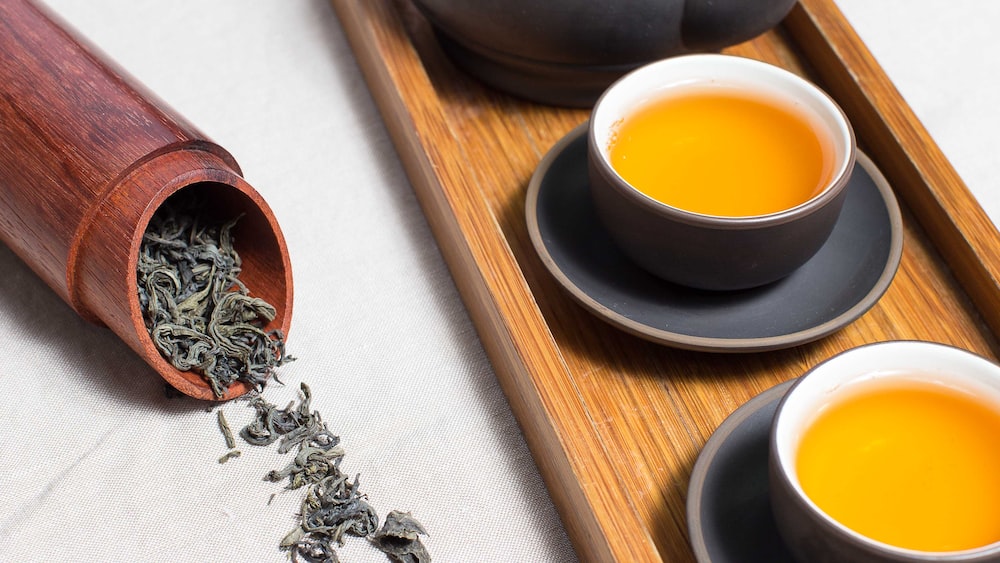
The Origins and History
Ah, the plot thickens as we turn back the pages to where it all started. The origin stories of these two cups of history are steeped in the annals of time, each leaf telling a tale that’s as rich as its flavor.
The Cultural Significance of Yellow Tea
In the upper echelons of ancient Chinese tea culture, yellow tea was once revered as a drink fit for emperors – a golden elixir swirling with prestige and nuanced elegance. It unraveled its leaves in the regal courts, and it’s rumored that the dignified hue of yellow reflected the imperial colors, which mere mortals could only admire from a distance.
Even today, in the villages where yellow tea is crafted with time-honored precision, it’s a poignant symbol of traditional tea-making. The artisans, with hands as seasoned as the teas they mold, bear the legacy of centuries-old techniques, weaving history into every sip.
The Cultural Significance of Green Tea
And then, we have green tea, the wise sage with a storied path stretching across continents. Originating from the same land as its illustrious cousin, green tea has seeped into many a culture, embedding itself within daily practices, from the Japanese tea ceremony to your morning mugful.
Green tea stands as a symbol of health and mindfulness, its very presence on the table a nod to a lifestyle intertwined with care, poise, and well-being. The leaves hold within them the breath of traditions, flourishing in communal cups and solitary steepings alike.
Processing Methods Compared
The magic in turning a tea leaf into a memorable cuppa lies in its processing – it’s where the leaf’s destiny is fully shaped. Let’s delve into how these two verdant virtuosos are crafted, each method weaving its own narrative.
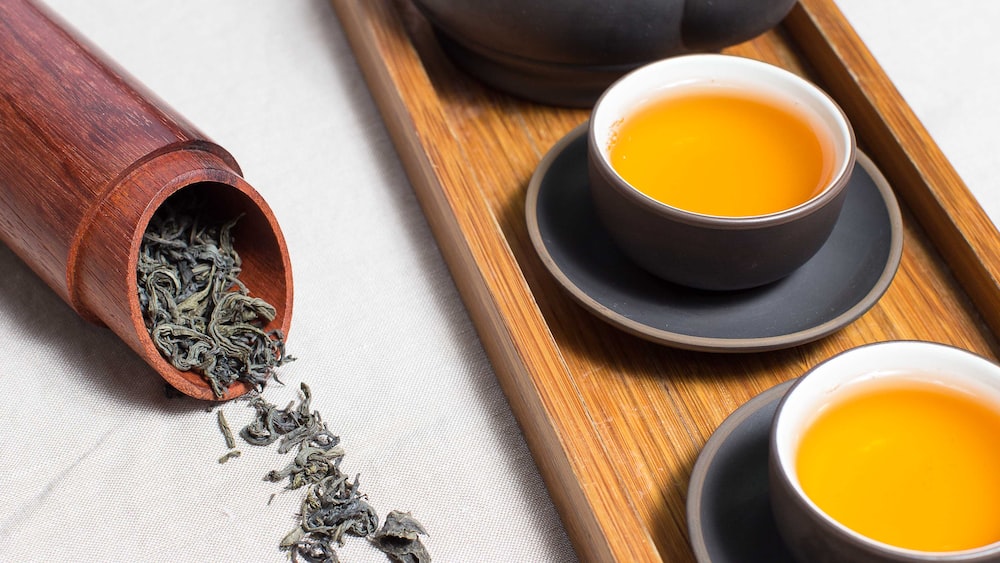
How Yellow Tea is Made
To brew up the story of yellow tea is to narrate an intricate ballet of patience and delicacy.
- First, the leaves are plucked with utmost precision and pan-fired, similar to green tea.
- But here’s the twist: they’re then carefully wrapped in cloth to enter the ‘sealing yellow’ stage, where they lightly oxidize, fostering that soft, muted taste.
It’s in these tranquil moments, wrapped in their yellow cloaks, that the leaves whisper to each other secrets of their gentle transformation, basking in a slow dance that brings out the tea’s signature sweetness and aromatic splendor.
Brewing yellow tea is a delicate process where the leaves are carefully wrapped to foster a soft, muted taste, allowing them to slowly transform and bring out the tea’s signature sweetness and aromatic splendor.
How Green Tea is Made
The artistry behind green tea, on the other hand, is a tale of swift action!
- The freshly picked leaves are greeted with heat through steaming or pan-firing to thwart the oxidation process that turns leaves darker.
- They’re then rolled into various shapes – from long and slender to curled and compact – like leafy artisans sculpting themselves to perfection.
This process ensures that when the leaves unfurl in your cup, they do so with a burst of fresh, vegetal notes that both refresh the senses and embrace the soul with a taste that’s as green as the lush fields from whence they came.
Flavor Profiles
Dive into the complex world of flavors, where the nuanced notes of yellow tea and green tea paint a palette as vivid as nature herself.
Tasting Notes of Yellow Tea
When sipping on yellow tea, transport yourself to a serene autumn morning with golden leaves rustling at your feet.
- First, the bouquet: an alluring whisper of floral and fruity notes gliding into your olfactory senses.
- Then the sip: a light-bodied yet roundly textured tea graces your palate, a tableau of subtle sweetness mingled with gentle roasted undertones.
Indeed, it’s in the aftertaste where the yellow tea truly winks at you, leaving behind a lingering, refined flavor that’s both discreet and delightfully profound.
Tasting Notes of Green Tea
As for green tea, it’s like diving into a crisp, cool lake on a sweltering summer’s day – utterly refreshing and invigorating.
- Upon first contact, the grassy, earthy aromas rise, greeting you like an old friend.
- With the first gulp, vibrant, verdant flavors cascade across the tongue, sometimes spiraling into astringency, other times blossoming into a silky sweetness that teases the senses.
Green tea is the maverick of the tea world, varying wildly from one type to another, a testament to the very soil and soul that nurtures it.
Green tea is a refreshing and invigorating experience with vibrant, verdant flavors that vary widely from one type to another, reflecting the soil and soul that nurtures it.
Health Benefits and Nutritional Content
Embark on a journey through the healthful realms where the nutrients and benefits of teas become the gems in their crowns, offering more than just warm comfort in a cup.
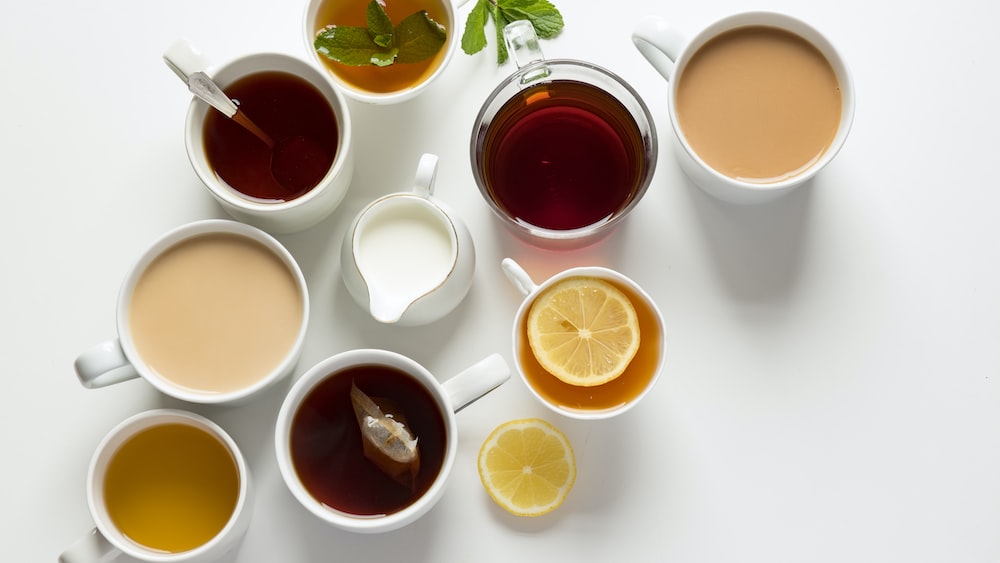
The Health Benefits of Yellow Tea
Sipping on yellow tea is like tiptoeing through an apothecary’s hidden garden, every sip steeped in potential health potions.
- Studies suggest a tryst between these amber leaves and the promotion of good digestion, thanks to their mild nature, which doesn’t besiege the stomach with bitterness.
- There’s a host of antioxidants lounging in those warm hues, believed to whisper sweet nothings to free radicals, lulling them into a state of benign slumber.
Furthermore, yellow tea may play a gallant knight, shielding your heart from the dragon of disease, and is often hailed for its capacity to strut down the runway of your bloodstream, reducing cholesterol with every sassy step.
The Health Benefits of Green Tea
While yellow tea whispers its benefits, green tea shouts them from the treetops.
- Replete with a cocktail of antioxidants known as catechins, green tea is the Herculean warrior of cellular defense, grappling with oxidative stress like it’s arm-wrestling for the Olympic gold.
- Sip on green tea, and you’re essentially awarding your body a medal of vigor with benefits that stretch from the fortification of heart health to supporting a crisp, cognitive buzz.
As a bonus, there’s chatter across the scientific community about its possible role in weight management. Imagine that – a cup of tea that might help you slip into those jeans from five years ago? Cheers to that, indeed.
Caffeine Content and Antioxidant Levels
Comparing Caffeine in Yellow Tea and Green Tea
When pitting yellow tea vs green tea in the caffeine arena, you’ll find the match is surprisingly balanced. Typically, yellow tea comes through as having slightly less caffeine, but let’s not jump to conclusions without unpacking the leaves, shall we?
Now, imagine you’re a detective, scouring through the loose leaf aggregates of evidence. The truth is, both teas generally contain between 20 to 30 milligrams of caffeine per cup. However, the exact amount can be a sneaky customer, tiptoeing around based on factors such as the leaf’s size, the time of the year it was picked, and even its processing dance moves.
For the tea drink aficionados with a sensitive constitution – a delicate dance with caffeine – yellow tea might just be your less jitter-inducing partner. But remember, even within the realms of green tea, there’s a spectrum of caffeine content; some have enough kick to rival your morning espresso, while others are the tea equivalent of a gentle, morning sunbeam.
Antioxidant Properties: Yellow Tea vs Green Tea
Antioxidants in tea are like the covert agents of health benefits – subtle and powerful. Now, green tea has long been praised to the stars for its antioxidant strength, but here comes yellow tea, doing the polite cough to remind us, it too, has a deck of antioxidants up its sleeve.
Research does its flashy jazz hands when it reveals that green tea is densely packed with catechins, those little protective warriors against cellular stress. Meanwhile, yellow tea waltzes in with its own dulcet tones, containing antioxidants that are thought to be just as potent, with the added bonus of a softer flavor profile that might win over those who find green tea occasionally, let’s say, overzealous in its grassy notes.
In this duel of yellow tea vs green tea, green tea might throw the first antioxidant punch, but yellow tea counters with a smooth dodge and a whisper of similar health-promoting properties. The bottom line? Both could be heavyweight champions in the ring of antioxidants, depending on which fight night you’re attending.
Both green tea and yellow tea are rich in antioxidants, with green tea packed with catechins and yellow tea offering a softer flavor profile while containing similarly potent antioxidants.
Brewing Techniques and Best Practices
How to Brew Yellow Tea for Optimal Flavor
Brewing yellow tea requires the finesse of a pianist playing a delicate sonata. Use water just when it’s about to go full symphony – which is about 70°C to 80°C (158°F to 176°F) – please, no boiling water here; we’re not trying to commit flavor homicide.
Then, introduce the loose leaf yellow tea into the water like you would add the final stroke to a masterpiece painting. The steeping time is a leisurely 1 to 3 minutes – this isn’t a race. You’re after a drink that warms the spirits and enriches the soul with its light, aromatic allure.
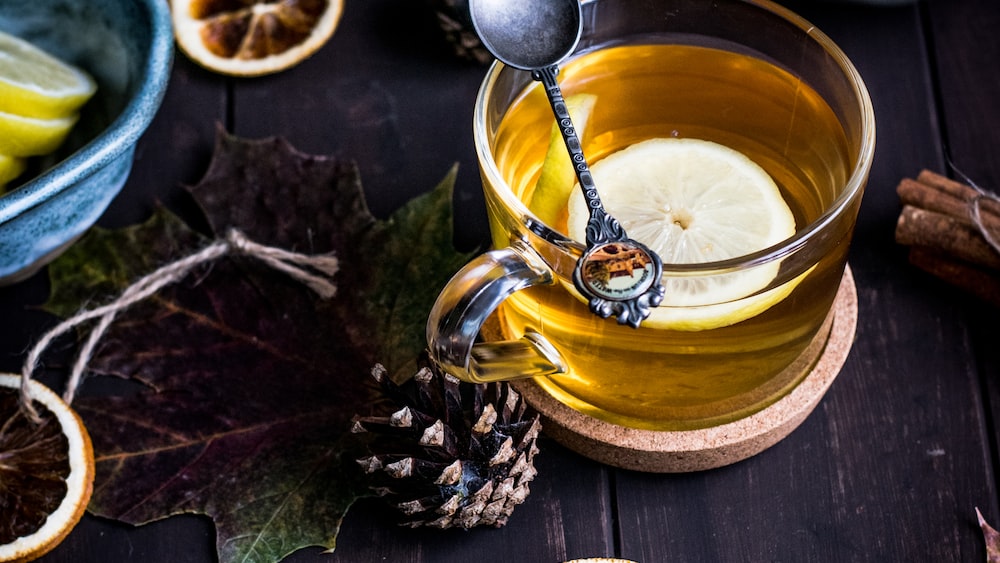
How to Brew Green Tea for Optimal Flavor
Green tea, on its part, demands a lookout for temperature vigilance – too hot and your tea’s essence will shout a bitter rebellion. Keep the water just shy of boiling, at about 80°C to 85°C (176°F to 185°F), for a start.
Then, usher your loose leaf or teabag into the water with the care of a shepherd guiding his flock. The steeping time should be short and sweet, typically around 2 to 3 minutes, ensuring the liquid that emerges is as refreshing and flavorsome as a brisk walk in the spring morning air.
To brew green tea perfectly, maintain a temperature of 80°C to 85°C and steep for 2 to 3 minutes for a refreshing and flavorsome taste.
Availability and Rarity
Why is Yellow Tea Rarer than Green Tea?
Pondering why yellow tea is harder to find than green tea is like wondering why a band’s obscure B-sides aren’t as prevalent as their chart-toppers. Simply put, it’s all about popularity and production.
Yellow tea, with its meticulous oxidation process, is more of a high-maintenance affair compared to the relatively straightforward production of green tea. This pampered prince of the tea world requires more time, more precision, and often hand-crafted attention, making it the needle in the haystack of tea varieties.
Where to Find and Purchase Yellow Tea and Green Tea
Ah, the hunt for the perfect teas! It’s quite the adventure, wouldn’t you agree? Let’s hit the ground running with a list of places to sniff out these elusive leaves:
- Tea-specialty stores: No brainer here, the connoisseurs of the leafy blends.
- Online retailers: A click away lays a world of tea – the digital bazaar of choices.
- The increasingly popular farmers’ markets: Where you might just lock eyes with a loose leaf that tells tales of distant lands.
So, where does yellow tea tend to coyly hide? You’re most likely to find it in well-stocked online stores or at specialty tea shops, where sellers understand the allure of the rare. Green tea, the social butterfly, flutters around almost everywhere – grocery stores, cafes, and even some random gas stations (but let’s agree, that’s not where we’d prefer to invite it into our lives).
FAQs
1. What are the main differences between yellow tea and green tea?
The main differences between yellow tea and green tea center on processing, flavor, and their respective places at the tea party. Yellow tea enjoys a special oxidation step giving it a milder, smoother character, while green tea boasts a more down-to-earth, grassy profile. Both are steeped in culture, but yellow tea sips from a cup of rarity and often higher prestige.
2. Can yellow tea and green tea be used interchangeably in recipes?
Using yellow tea and green tea interchangeably in recipes is like swapping silk for cotton – it can be done, but expect a difference in texture and grace. Yellow tea’s sweeter, mellower taste might offer a unique twist to your dishes, whereas green tea provides a more robust, verdant punch.
3. Which tea is better for someone sensitive to caffeine?
For someone sensitive to caffeine, yellow tea tends to be the gentler companion, often boasting just a tad less caffeinated perk than its green counterpart. However, individual responses to caffeine may vary, so it’s wise to dip your toes before diving in.
4. Are there any unique health benefits exclusive to yellow tea?
Indeed, there are unique health benefits exclusive to yellow tea, such as the potential for a higher concentration of antioxidants due to its extended oxidation period, which might just grace it with an extra golden glow of goodness.
Conclusion
So, there you have it – a tapestried tale of yellow tea vs green tea, woven with the threads of heritage and health. Whether you’re a connoisseur seeking the subtle melodies of flavors or a wellness enthusiast sifting through the tea leaves for their health elixir, understanding the distinctions is as enlightening as it is empowering.
Reflecting on yellow tea vs green tea, one can’t help but marvel at how these two teas, each with their distinct processions of leaves, can embody such diverse worlds within a single cup. This comparison isn’t just about taste or benefits – it’s a journey through history, culture, and the very heart of nature herself, all nestled within our daily rituals.
And with that, my fellow tea travelers, we come to the end of this steeped saga. May your cups always brim with the finest brews, and may your moments of tea sipping be as rejuvenating as a spring dawn. Keep your teapots warm and your curiosity warmer. Until next time, sip on, merry-makers of the mug!
Cheerfully,
Zoe

